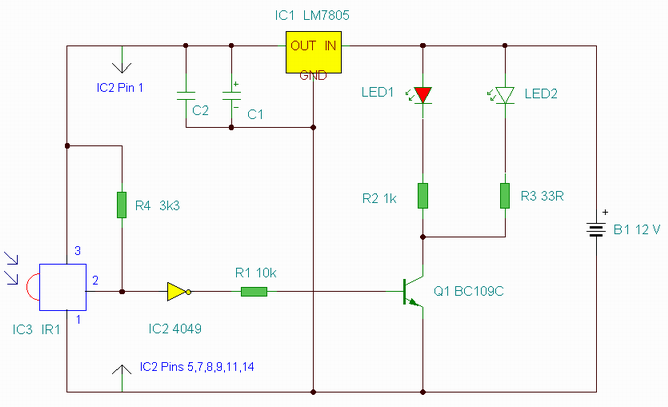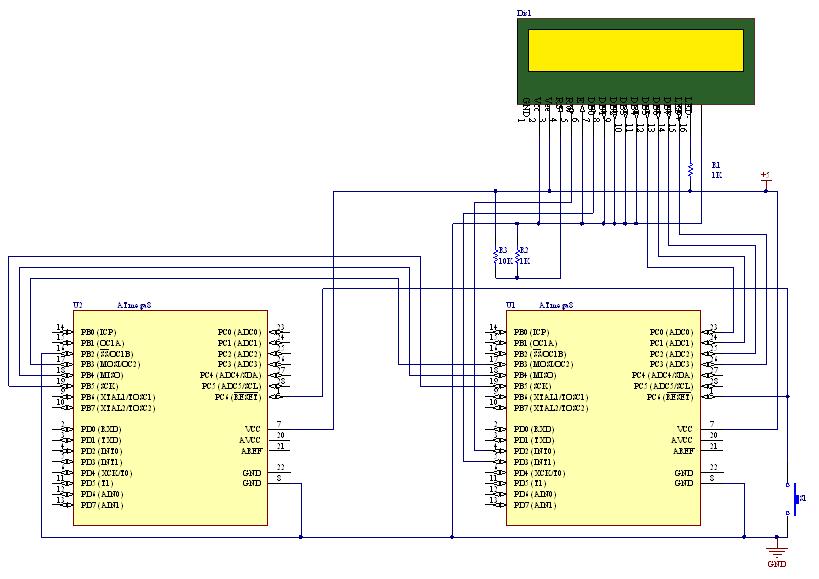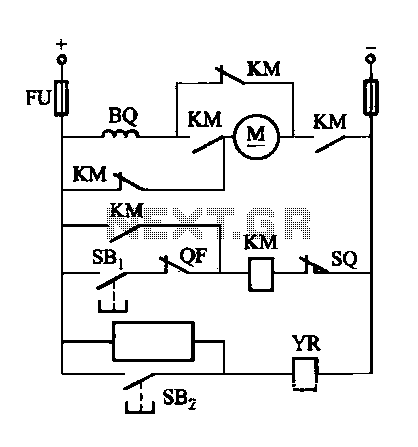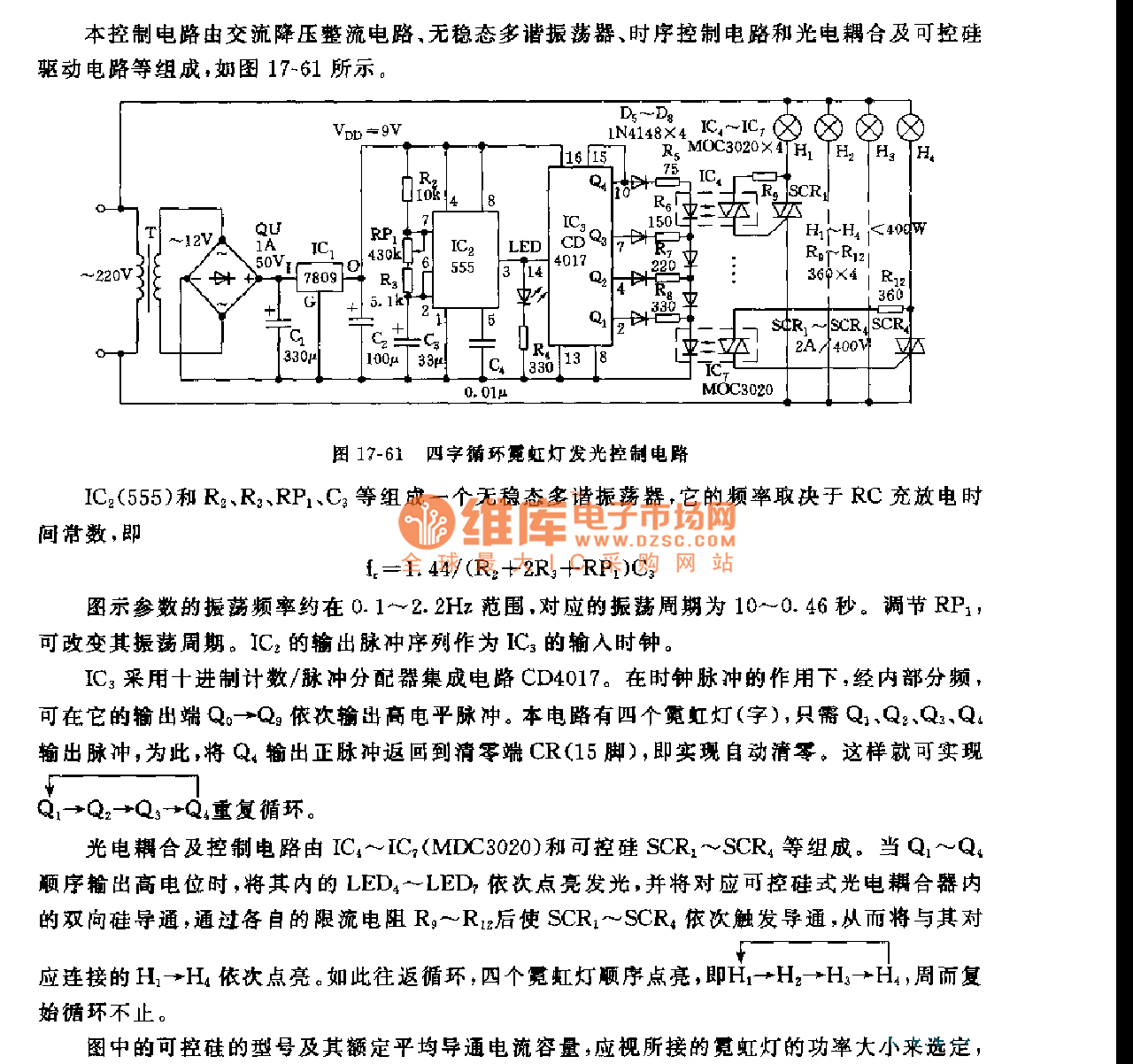
PC IR Remote Control Hardware
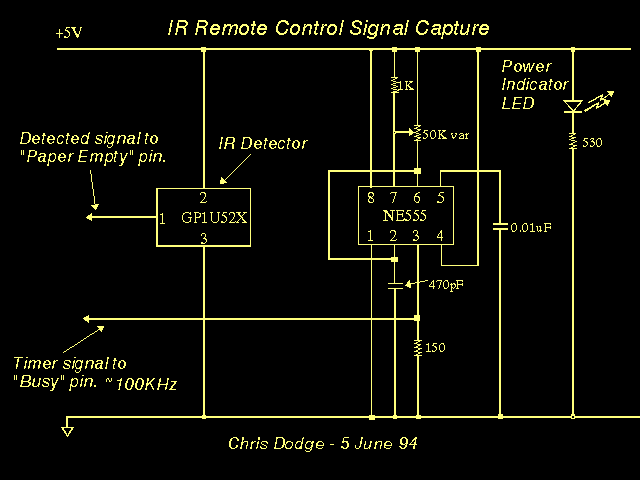
The hardware is constructed from two modules, one to capture the signal and provide timing functions, and the second as transmitter placed somewhere near the target equipment. It has been interfaced with an IBM compatible PC on the printer port, using the two pins "Paper Tray Empty" and "Printer Busy" as input, and Data lines 0 and 1 as output.
The described hardware system consists of two primary modules: a signal capture module and a transmission module. The signal capture module is responsible for detecting and processing incoming signals, which may include timing functions necessary for synchronization with the target equipment. This module typically incorporates components such as operational amplifiers for signal conditioning, analog-to-digital converters (ADCs) for digitizing the signals, and microcontrollers for processing the captured data and executing timing functions.
The transmission module is designed to send processed signals to the target equipment. It is strategically placed near the equipment to ensure effective communication. This module may include a digital-to-analog converter (DAC) if the output needs to be in analog form, as well as RF transmitters or other communication interfaces depending on the requirements of the target system.
Communication between the hardware modules and the IBM compatible PC is established through the printer port, specifically utilizing the "Paper Tray Empty" and "Printer Busy" pins for input. These pins serve as digital input signals that can be monitored by the microcontroller within the signal capture module. The Data lines 0 and 1 are utilized for output, allowing the system to send data back to the PC for further processing or display.
The overall design should ensure that signal integrity is maintained throughout the system, with appropriate filtering and shielding to minimize noise and interference. Power supply considerations are also critical, as both modules must be adequately powered while ensuring that the voltage levels are compatible with the interfacing components of the PC. Proper grounding and circuit layout techniques should be employed to enhance reliability and performance.The hardware (as I have bullt it) is constructed from two modules, one to capture the signal and provide timing functions, and the second as transmitter placed somewhere near the target equipment. I have interfaced this to my IBM compatible PC on the printer port, using the two pins "Paper Tray Empty" and "Printer Busy" as input, and Data lines 0 and 1 as output.
🔗 External reference
The described hardware system consists of two primary modules: a signal capture module and a transmission module. The signal capture module is responsible for detecting and processing incoming signals, which may include timing functions necessary for synchronization with the target equipment. This module typically incorporates components such as operational amplifiers for signal conditioning, analog-to-digital converters (ADCs) for digitizing the signals, and microcontrollers for processing the captured data and executing timing functions.
The transmission module is designed to send processed signals to the target equipment. It is strategically placed near the equipment to ensure effective communication. This module may include a digital-to-analog converter (DAC) if the output needs to be in analog form, as well as RF transmitters or other communication interfaces depending on the requirements of the target system.
Communication between the hardware modules and the IBM compatible PC is established through the printer port, specifically utilizing the "Paper Tray Empty" and "Printer Busy" pins for input. These pins serve as digital input signals that can be monitored by the microcontroller within the signal capture module. The Data lines 0 and 1 are utilized for output, allowing the system to send data back to the PC for further processing or display.
The overall design should ensure that signal integrity is maintained throughout the system, with appropriate filtering and shielding to minimize noise and interference. Power supply considerations are also critical, as both modules must be adequately powered while ensuring that the voltage levels are compatible with the interfacing components of the PC. Proper grounding and circuit layout techniques should be employed to enhance reliability and performance.The hardware (as I have bullt it) is constructed from two modules, one to capture the signal and provide timing functions, and the second as transmitter placed somewhere near the target equipment. I have interfaced this to my IBM compatible PC on the printer port, using the two pins "Paper Tray Empty" and "Printer Busy" as input, and Data lines 0 and 1 as output.
🔗 External reference
